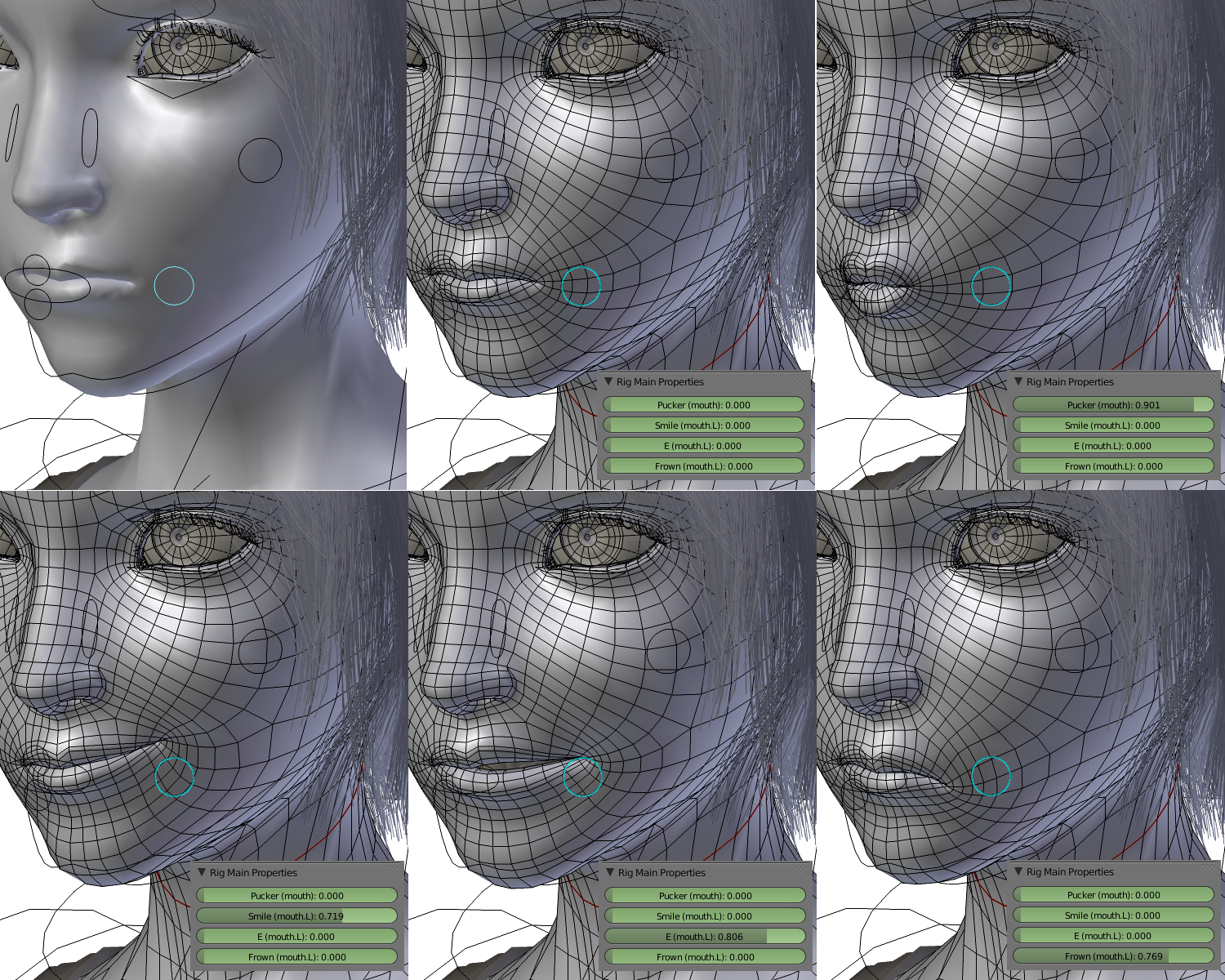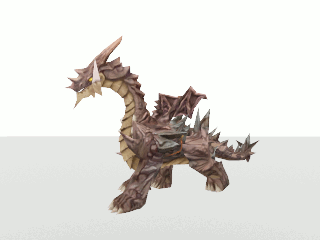|
FaceFX
FaceFX is a facial animation software developed by OC3 Entertainment. It was designed to create realistic Lip synchronization from audio files in computer games. It was used in Bethesda games such as the Elder Scrolls series and Fallout. Description The central component of the program is the face graph. It combines bone poses and morph targets to a single target which is driven by animation curves. These are created by a speech recognition system but can also be manually edited. The facial animation is then outputted to the game engine either as bone transformation or morph target frame by frame. To create a realistic animation curve, the program recognizes 42 phonemes and tries to take co-articulation rules into account. It also tries to create head movement, blinks, and eyebrow raises from emphasis points in the audio file. See also * 3D computer graphics 3D computer graphics, sometimes called Computer-generated imagery, CGI, 3D-CGI or three-dimensional Computer-g ... [...More Info...] [...Related Items...] OR: [Wikipedia] [Google] [Baidu] |
Lip Synchronization
Lip sync or lip synch (pronounced , like the word ''sink'', despite the spelling of the participial forms ''synced'' and ''syncing''), short for lip synchronization, is a technical term for matching a speaking or singing person's lip movements with sung or spoken vocals. Audio for lip syncing is generated through the sound reinforcement system in a live performance or via television, computer, cinema speakers, or other forms of audio output. The term can refer to any of a number of different techniques and processes, in the context of live performances and audiovisual recordings. In film production, lip syncing is often part of the post-production phase. Dubbing foreign-language films and making animated characters appear to speak both require elaborate lip syncing. Many video games make extensive use of lip-synced sound files to create an immersive environment in which on-screen characters appear to be speaking. In the music industry, lip syncing is used by singers for music v ... [...More Info...] [...Related Items...] OR: [Wikipedia] [Google] [Baidu] |
Facial Animation
Computer facial animation is primarily an area of computer graphics that encapsulates methods and techniques for generating and animating images or models of a character face. The character can be a human, a humanoid, an animal, a legendary creature or character, etc. Due to its subject and output type, it is also related to many other scientific and artistic fields from psychology to traditional animation. The importance of face, human faces in communication, verbal and non-verbal communication and advances in Graphics processing unit, computer graphics hardware and software have caused considerable scientific, technological, and artistic interests in computer facial animation. Although development of computer graphics methods for facial animation started in the early-1970s, major achievements in this field are more recent and happened since the late 1980s. The body of work around computer facial animation can be divided into two main areas: techniques to generate animation data, ... [...More Info...] [...Related Items...] OR: [Wikipedia] [Google] [Baidu] |
Computer Games
A video game or computer game is an electronic game that involves interaction with a user interface or input device (such as a joystick, game controller, controller, computer keyboard, keyboard, or motion sensing device) to generate visual feedback from a display device, most commonly shown in a video format on a television set, computer monitor, flat-panel display or touchscreen on handheld devices, or a virtual reality headset. Most modern video games are audiovisual, with Sound, audio complement delivered through loudspeaker, speakers or headphones, and sometimes also with other types of sensory feedback (e.g., haptic technology that provides Touch, tactile sensations). Some video games also allow microphone and webcam inputs for voice chat in online gaming, in-game chatting and video game livestreaming, livestreaming. Video games are typically categorized according to their hardware platform, which traditionally includes arcade video games, console games, and PC game, comp ... [...More Info...] [...Related Items...] OR: [Wikipedia] [Google] [Baidu] |
Speech Recognition
Speech recognition is an interdisciplinary subfield of computer science and computational linguistics that develops methodologies and technologies that enable the recognition and translation of spoken language into text by computers. It is also known as automatic speech recognition (ASR), computer speech recognition or speech-to-text (STT). It incorporates knowledge and research in the computer science, linguistics and computer engineering fields. The reverse process is speech synthesis. Some speech recognition systems require "training" (also called "enrollment") where an individual speaker reads text or isolated vocabulary into the system. The system analyzes the person's specific voice and uses it to fine-tune the recognition of that person's speech, resulting in increased accuracy. Systems that do not use training are called "speaker-independent" systems. Systems that use training are called "speaker dependent". Speech recognition applications include voice user interfaces ... [...More Info...] [...Related Items...] OR: [Wikipedia] [Google] [Baidu] |
Skeletal Animation
Skeletal animation or rigging is a technique in computer animation in which a character (or other articulated object) is represented in two parts: a polygonal or parametric mesh representation of the surface of the object, and a hierarchical set of interconnected parts (called joints or bones, and collectively forming the skeleton), a virtual armature used to animate (pose and keyframe) the mesh. While this technique is often used to animate humans and other organic figures, it only serves to make the animation process more intuitive, and the same technique can be used to control the deformation of any object—such as a door, a spoon, a building, or a galaxy. When the animated object is more general than, for example, a humanoid character, the set of "bones" may not be hierarchical or interconnected, but simply represent a higher-level description of the motion of the part of mesh it is influencing. The technique was introduced in 1988 by Nadia Magnenat Thalmann, Richard Lape ... [...More Info...] [...Related Items...] OR: [Wikipedia] [Google] [Baidu] |
Morph Target Animation
Morph target animation, per-vertex animation, shape interpolation, shape keys, or blend shapes is a method of 3D computer animation used together with techniques such as skeletal animation. In a morph target animation, a "deformed" version of a mesh is stored as a series of vertex positions. In each key frame of an animation, the vertices are then interpolated between these stored positions. Technique The "morph target" is a deformed version of a shape. When applied to a human face, for example, the head is first modelled with a neutral expression and a "target deformation" is then created for each other expression. When the face is being animated, the animator can then smoothly morph (or "blend") between the base shape and one or several morph targets. Typical examples of morph targets used in facial animation is a smiling mouth, a closed eye, and a raised eyebrow. Early 3D videogames, such as Quake and Crash Bandicoot use per-vertex animation for all character animations. W ... [...More Info...] [...Related Items...] OR: [Wikipedia] [Google] [Baidu] |
Phonemes
A phoneme () is any set of similar speech sounds that are perceptually regarded by the speakers of a language as a single basic sound—a smallest possible phonetic unit—that helps distinguish one word from another. All languages contain phonemes (or the spatial-gestural equivalent in sign languages), and all spoken languages include both consonant and vowel phonemes; phonemes are primarily studied under the branch of linguistics known as phonology. Examples and notation The English words ''cell'' and ''set'' have the exact same sequence of sounds, except for being different in their final consonant sounds: thus, versus in the International Phonetic Alphabet (IPA), a writing system that can be used to represent phonemes. Since and alone distinguish certain words from others, they are each examples of phonemes of the English language. Specifically they are consonant phonemes, along with , while is a vowel phoneme. The spelling of English does not strictly conform ... [...More Info...] [...Related Items...] OR: [Wikipedia] [Google] [Baidu] |
3D Computer Graphics
3D computer graphics, sometimes called Computer-generated imagery, CGI, 3D-CGI or three-dimensional Computer-generated imagery, computer graphics, are graphics that use a three-dimensional representation of geometric data (often Cartesian coordinate system#Cartesian coordinates in three dimensions, Cartesian) that is stored in the computer for the purposes of performing calculations and rendering digital images, usually 2D images but sometimes 3D images. The resulting images may be stored for viewing later (possibly as an Computer animation, animation) or displayed in Real-time computer graphics, real time. 3D computer graphics, contrary to what the name suggests, are most often displayed on two-dimensional displays. Unlike 3D film and similar techniques, the result is two-dimensional, without visual depth perception, depth. More often, 3D graphics are being displayed on 3D displays, like in virtual reality systems. 3D graphics stand in contrast to 2D computer graphics which t ... [...More Info...] [...Related Items...] OR: [Wikipedia] [Google] [Baidu] |
Computer Animation
Computer animation is the process used for digitally generating Film, moving images. The more general term computer-generated imagery (CGI) encompasses both still images and moving images, while computer animation refers to moving images. Virtual cinematography, Modern computer animation usually uses 3D computer graphics. Computer animation is a digital successor to stop motion and traditional animation. Instead of a physical model or illustration, a digital equivalent is manipulated frame-by-frame. Also, computer-generated animations allow a single graphic artist to produce such content without using actors, expensive set pieces, or Theatrical property, props. To create the illusion of movement, an image is displayed on the computer monitor and repeatedly replaced by a new similar image but advanced slightly in time (usually at a rate of 24, 25, or 30 frames/second). This technique is identical to how the illusion of movement is achieved with television and Film, motion pictur ... [...More Info...] [...Related Items...] OR: [Wikipedia] [Google] [Baidu] |
Animation Software
Computer animation is the process used for digitally generating moving images. The more general term computer-generated imagery (CGI) encompasses both still images and moving images, while computer animation refers to moving images. Modern computer animation usually uses 3D computer graphics. Computer animation is a digital successor to stop motion and traditional animation. Instead of a physical model or illustration, a digital equivalent is manipulated frame-by-frame. Also, computer-generated animations allow a single graphic artist to produce such content without using actors, expensive set pieces, or props. To create the illusion of movement, an image is displayed on the computer monitor and repeatedly replaced by a new similar image but advanced slightly in time (usually at a rate of 24, 25, or 30 frames/second). This technique is identical to how the illusion of movement is achieved with television and motion pictures. To trick the visual system into seeing a smoot ... [...More Info...] [...Related Items...] OR: [Wikipedia] [Google] [Baidu] |
Audio To Video Synchronization
Audio-to-video synchronization (AV synchronization, also known as lip sync, or by the lack of it: lip-sync error, lip flap) refers to the relative timing of audio (sound) and video (image) parts during creation, post-production (mixing), transmission, reception and play-back processing. AV synchronization is relevant in television, videoconferencing, or film. In industry terminology, the lip-sync error is expressed as the amount of time the audio departs from perfect synchronization with the video where a positive time number indicates the audio leads the video and a negative number indicates the audio lags the video. This terminology and standardization of the numeric lip-sync error is utilized in the professional broadcast industry as evidenced by the various professional papers, standards such as ITU-R BT.1359-1, and other references below. Digital or analog audio video streams or video files usually contain some sort of synchronization mechanism, either in the form of int ... [...More Info...] [...Related Items...] OR: [Wikipedia] [Google] [Baidu] |




